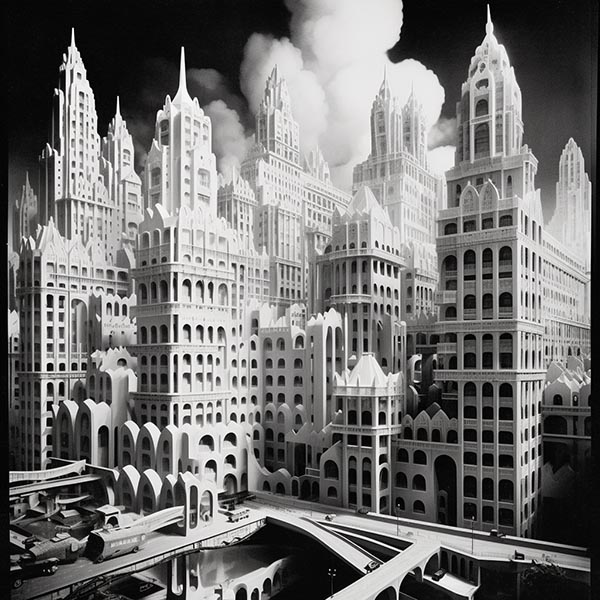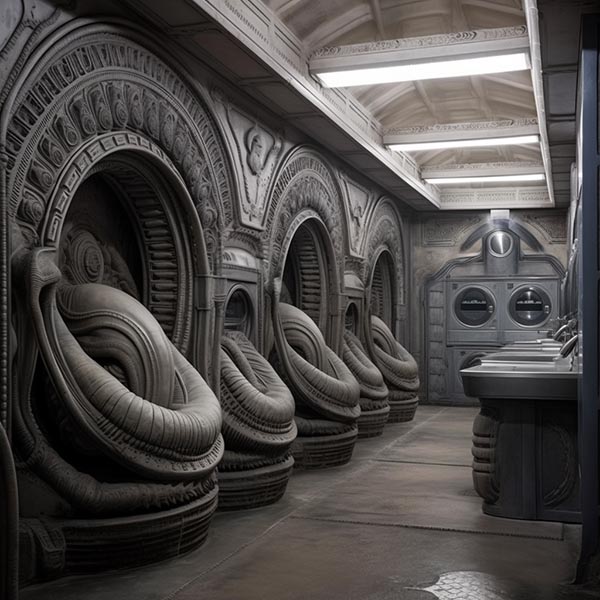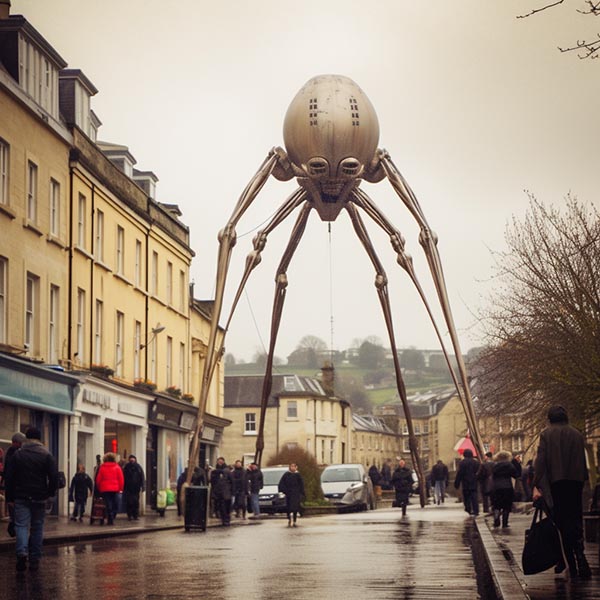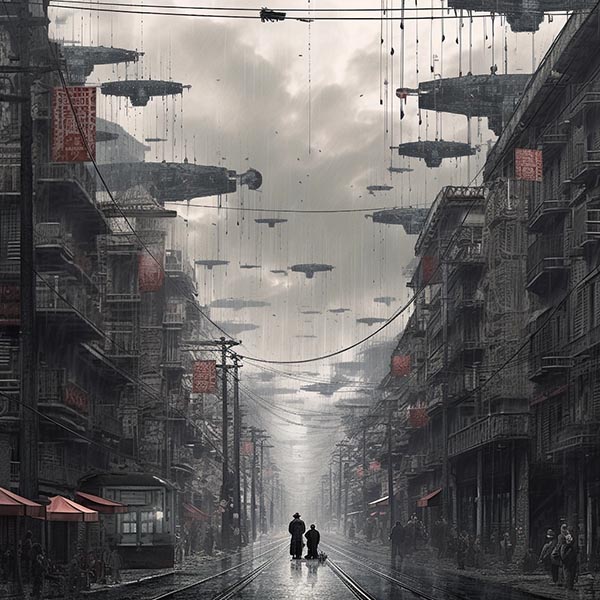Graphic Design in the age of Artificial Intelligence

If you are a designer, are you worried about the rise of AI? Should you be?
Although it is very zeitgeisty to talk about it these days, there’s no denying that we have reached a tipping point with regard to the adoption of AI in the creative world. It reminds me very much of the moment when the internet seemed to explode around us. Although the World Wide Web had been around for a number of years, it really did feel like 1997 was the point in which it hit, seemingly overnight. All of a sudden internet cafes were opening on street corners and work computers were granted access to the web. Modems became a standard peripheral bundled with most new computers, and sites like Yahoo and Ask Jeeves created an approachable interface for non-techies to navigate the nascent landscape of the ‘information superhighway’. But more than this, it felt that conversations in pubs and over dinner tables would centre upon information discovered online rather than by old-fashioned media. I am reminded of this today, because although the seemingly sudden arrival of AI in the public sphere seems quite jarring, we have been through such cultural inflections before and we have survived them.
Both ChatGPT and MidJourney were officially launched last year, so they really are new (rather than being just newly discovered) and my first encounter with both of them has been dazzling. Although I wasn’t quite ready to hang up my mouse, the experience has certainly caused me to pause and dig a little deeper.
Interacting with ChatGPT is very easy, it seems to understand what you want, unlike our old nemesis Clippy, Microsoft’s obnoxiously meddling and incompetent assistant. In fact, this initial ease can lure one into a false sense of security with regard to its pronouncements. Ask it anything factual and you will get a full and confident response, but when checking ChatGPT's answers, you can often find errors. You can even point out these innacuracies to ChatGPT and it will apologise for the mistake (in what I always assume is a passive aggressive tone of voice). I suspect these factual errors will be quickly ironed out, and ChatGPT will evolve to become a very reliable source of information, not unlike Wikipedia - largely correct, but by its very nature prone to incorrect information, either by mistake or maliciousness.

But most users go beyond using ChatGPT merely as a source of information, and into the realm of creativity. It can be amusing to ask it to tell you a joke, or write a story. I have also employed it to write copy, song lyrics and even guitar riffs. The last instance is particularly interesting because ChatGPT has no inherent musicality, it draws from previously notated music for inspiration and as such it has never ‘heard’ music. The results of this have been less than thrilling - song-writers can rest easy for a little while longer. And when I dig down into any text written by ChatGPT I find it really only gets a C grade. And that is indeed one of the issues with it. ChatGPT takes a huge sampling of writing to process and as such its output resembles an average of that. While the writing certainly meets the criteria of any request, the algorithm has no taste or creativity itself and so what it produces is by very definition generic. But then again, so much copy out in the world in the form of brochures, websites and advertising is itself incredibly generic. As the public sphere becomes flooded with ChatGPT-generated copy, maybe copywriters fear for their viability of their profession. I hope we don’t lose them, but maybe to survive, copywriters need to accentuate their humanity in the writing. Maybe we can look forward to copy that is more quirky, wittier, more creative and with more individuality.

As for us graphic designers, I have already found ChatGPT to be of great use. Generic copy should be kept from public consumption, but while mocking-up work, it is so much better than Lorem Ipsum, and it can’t be long before the command ‘fill with placeholder text’ triggers the response ‘Please tell me what subject you would like for the text.’
Behind the scenes, ChatGPt can be put to powerful use. For one, it can be a pretty decent proof-reader of text already written. I have also found great use for it with evaluating code, specifically html, css and javascript where the algorithm can help with formatting and error checking. I have also put it to use in writing code, specifically scripting for InDesign and Photoshop. And while it can convert a task that would take hours into minutes, I found that its first efforts at scripting just threw up errors. I was able to detect and correct the problem (in one instance it was a single rogue ‘0’ that caused the trouble) but it was crucial that I comprehended the code so could trace the problem myself. I’m sure that ChatGPTs fallibility will lessen over time, and non-coders will be able to use it to write javascript for use, despite not understanding a single line of the code.

My first dabblings with MidJourney can be seen on this page. The images it creates are instantly gratifying, and for someone who is not an artist but still visually creative it feels like a part of my brain has been finally unleashed. All those fake album covers are now only a few key strokes away.
The images are often imperfect though - MidJourney seems to struggle with rendering hands especially and frequently deformities appear in images. Again, I feel this will be ironed out quickly.
So is this game over for photographers, artists and illustrators? I think that people will desire unique artwork they can hang on their walls, and relish the fact that a human made it, but the easy access we have to this imagery will certainly be impactful. The first victim of this will be stock imagery libraries. Over the years, I personally have spent far too long looking for the perfect stock image, and it’s a shame that the likes of shutterstock didn’t even employ AI into their searching algorithm. But going forward the ability to create the perfect stock image that is truly unique will supersede these libraries. One of the reasons this will happen is because stock imagery by its very nature can be incredibly generic, in both content and style, and so it is easy for AI to imitate. Again, I hope that we do not lose the many great photographers at work today, but their professional survival will be determined by how creative and unique their work is.

I now envisage a professional life that takes advantage of the apparent creativity MidJourney and its ilk affords us. Does that mean that Graphic Designers are also at risk? Well, I’m sure some people will forego employing a designer by getting an AI to design their logo, but at the very least, MidJourney is a great source of inspiration, and can help greatly with ideation, or jump-starting creativity in the face of a block. But as I get deeper into the workings of MidJourney, the more I understand how important are the prompts you give it. Getting the exact image you require needs a lot more than simply asking for it, there’s a process of honing an image with ever-more intricate requests, and it is already at the point where those that don’t know how to generate exactly what they want will need to work with someone who does know how to draw what they need from the algorithm. A designer can act as an interpreter of sorts to get exactly what is needed. Until a second layer of AI does that for them…

So, here we are on the verge of a new era of design and creativity. At the moment I do not fear being replaced by an AI, but I am certain that designers who choose not to engage with AI tools will be replaced by those that do.
May 2023
All images on this page were created with MidJourney
Recommended further reading: Life 3.0 by Max Tegmark